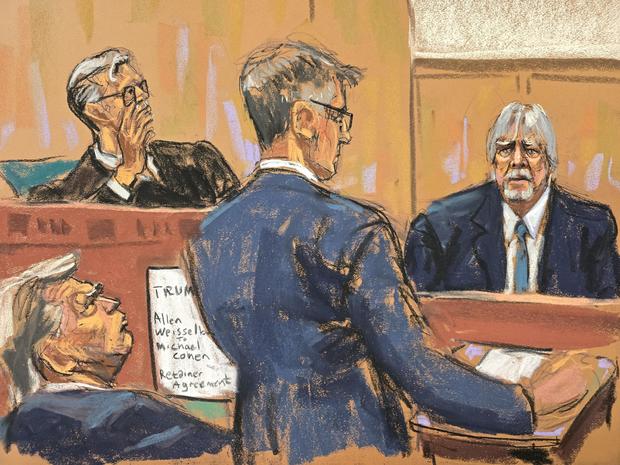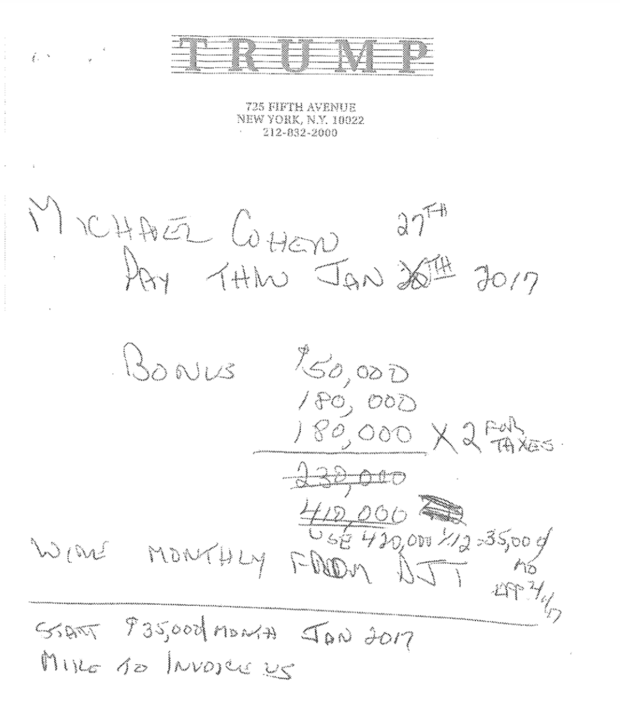
Jury in Trump trial gets inside look into payments to Michael Cohen
Jane Rosenberg
As much as this trial is about salacious headlines and tabloid drama, it’s also about accounting.
McConney explained how Cohen’s $130,000 wire to Daniels’ attorney in October 2016 led to a series of 12 monthly payments to Cohen of $35,000, for a total of $420,000.
McConney recounted a conversation with former Trump Organization chief financial officer Allen Weisselberg in January 2017, around the time that Trump assumed the presidency.
McConney said Weisselberg walked in with a notepad and said he needed to discuss payments to be made to Cohen.
“He kind of threw the pad at me and said, ‘Take this down,'” McConney said, adding that he was also given a copy of a Cohen bank statement showing his $130,000 wire to Daniels’ lawyer. Jurors were shown McConney’s notes from that day, which appeared beneath “Trump” letterhead.
The notes showed a series of scrawled math, with a base pay of $180,000 — for the Daniels wire, plus $50,000 he had paid to a technology services firm — doubled to $360,000.
McConney said the doubling was a practice called “grossing up,” in which the company increased certain payments to executives to offset a potential 50% tax rate.
Added to the $360,000 was a $60,000 bonus, which McConney mistakenly listed as $50,000 before correcting the total. McConney said Cohen had complained about having not received a large enough bonus at the end of 2016, and this was meant to remedy that.
The notes included calculations, mirrored by those written by Weisselberg on Cohen’s statements: $420,000 divided by 12 equals monthly payments of $35,000.
Manhattan District Attorney’s Office
Finally, near the bottom, McConney wrote a note he said meant that the payments were supposed to come from Trump’s personal bank account: “Wire monthly from DJT.”
Despite that instruction, the first few checks were sent from a trust set up to hold Trump’s assets while he was in office. Its trustees were Weisselberg and Trump’s two adult sons.
But in late March of that year, they made the decision to have payments going forward come straight from Trump’s personal account. That meant the only person who could sign for them was the president of the United States, McConney said.
“At some point we had to start getting the checks to the White House for President Trump to sign,” McConney said. “It was a whole new process for us.”
Source: cbsnews.com
